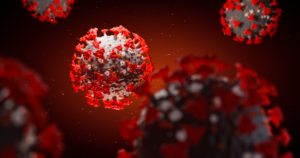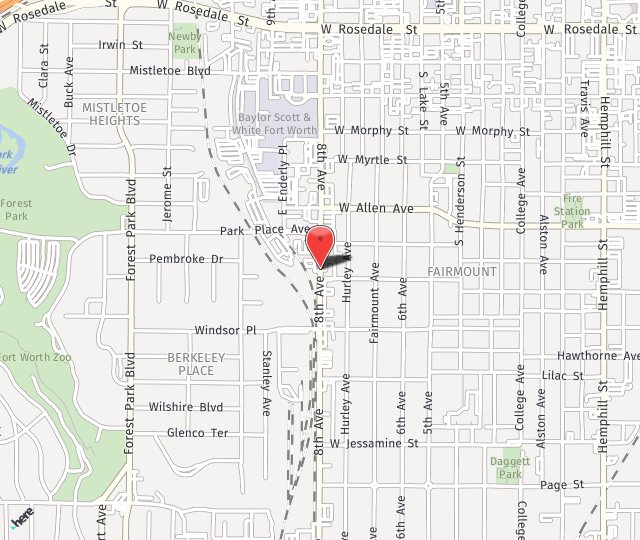As I’ve been keeping up with the pandemic, I’ve found myself a little confused by the terms used by people and media outlets. If I’m confused, I’m guessing a lot of people are confused. After looking into it, I’ve listed some information that hopefully clarifies the picture a little.
Coronavirus
Coronavirus is actually a family of viruses. The word ‘corona’ refers to ‘crown’. The members of this family of viruses have proteins on their surfaces that project outward. The scientists who named this family ‘coronavirus’ thought the projecting proteins looked a little bit like a crown. The image below is an artist’s rendering of a coronavirus.

Coronavirus, the family, has many members. Like many families, the coronavirus family has some ‘bad actors’. One of its members causes the common cold. Another member is the original SARS virus. SARS stands for Severe Acute Respiratory Syndrome. In 2003 a viral infection spread to about 8000 people around the world, resulting in about 800 deaths. The virus caused sudden respiratory symptoms. That virus was named SARS-CoV.
The virus causing the current world pandemic was first called the ‘novel coronavirus’. That’s because in December 2019, it was indeed novel, or new. Before that, it had never been encountered in humans. The current pandemic virus also causes respiratory symptoms and is a member of the coronavirus family, so it was named SARS-CoV-2. Media and the public don’t usually refer to it as SARS-CoV-2 because that’s too complicated. It’s more common to see the word ‘coronavirus’ used, or the term COVID-19.
COVID-19
COVID-19 doesn’t actually refer to the virus. It refers to the disease caused by the virus. COVID-19 refers to COronaVIrus Disease. The 19 refers to the year it was discovered – 2019. The virus typically causes upper respiratory symptoms (mouth, nose, throat). It may result in a mild sore throat, for instance. A sign that it is getting worse is a major runny/stuffy nose. Some of the people affected develop this so severely that they feel like they are drowning in their own mucus. Once that happens, it often spreads rapidly to the lower respiratory tract, the lungs. When it gets to the lungs it can cause major problems with breathing. Many people develop viral pneumonia, which is different than and more difficult to treat than bacterial pneumonia. It’s more difficult because there are no medications that actually work against it. With bacterial pneumonia, there are often antibiotics that kill the bacteria. Not so with viral pneumonia.
It is clear that people over the age of 60 develop more significant problems with COVID-19 than younger people. Across the world the vast majority of people who have died from the disease have been over the age of 70. However, about 40% of US hospital admissions are taking place in people younger than 60. About 50% of ICU admissions in the US are people younger than 60. It’s a bad disease that can kill people of all ages, but certainly those over the age of 60 do much worse than people under that age.
Take-home points
It’s easiest to refer to the virus causing the pandemic as ‘coronavirus’. That’s not the most accurate term, as discussed above, but it is easy and everyone knows what you’re talking about.
COVID-19 is the respiratory disease caused by the virus. It’s not the virus. The World Health Organization (WHO) deems anyone who tests positive for having SARS-CoV-2 has COVID-19. This designation assumes respiratory symptoms are present and may progress.
Most people infected with SARS-CoV-2 don’t develop significant respiratory symptoms. It appears that perhaps up to 80% of people who catch the virus don’t have any symptoms at all, or perhaps have a mild sore throat, a dry cough, low grade fever, headache, or some gastrointestinal issues. But in a way that’s what’s so tricky about it. Most people, at least before March 2020, wouldn’t think twice about mild symptoms like that. They would just go about their daily lives. With this virus, however, there is rapid spread, and that can prove fatal.
Assume that everyone you see has the virus. Remember, probably most people that have it don’t even know they have it.
Wash your hands with soap and warm water often. I’m sure you’ve heard this before. It’s way beyond time to start doing it.
Stay home for now.
If you are walking in your neighborhood, try not to stop to socialize with people. If you do stop to talk, maintain at least a 6 foot distance from them and don’t pet their dogs.

